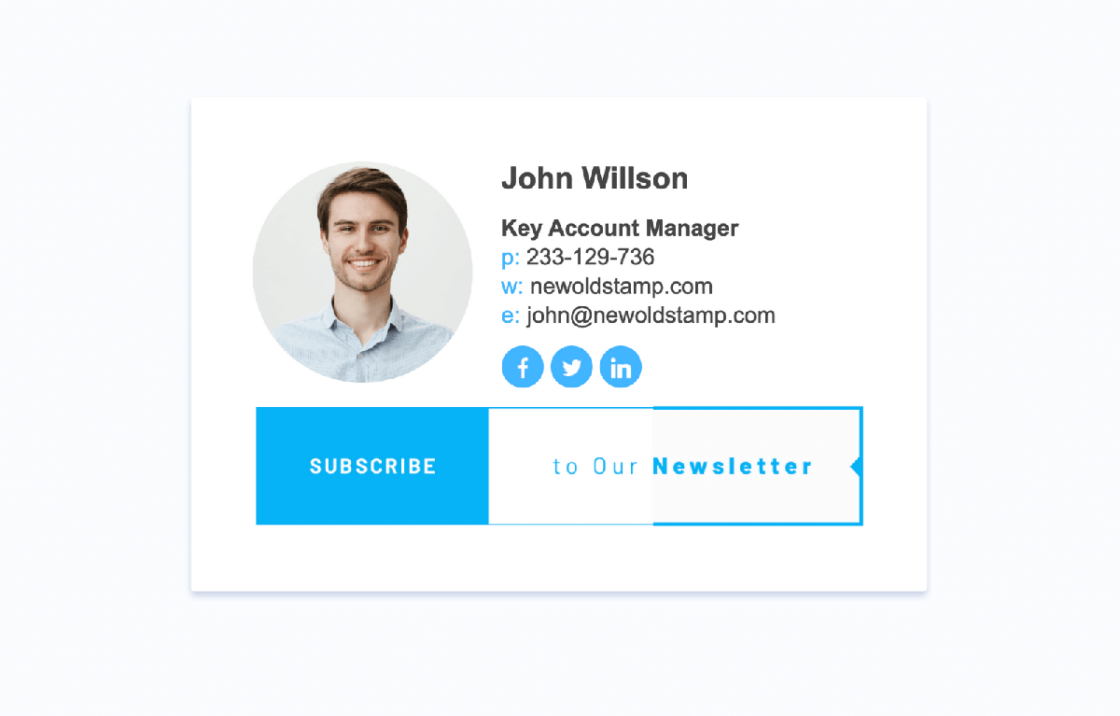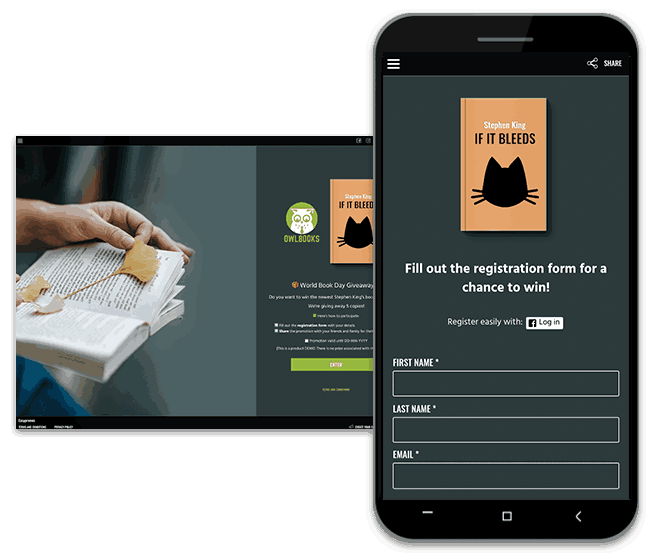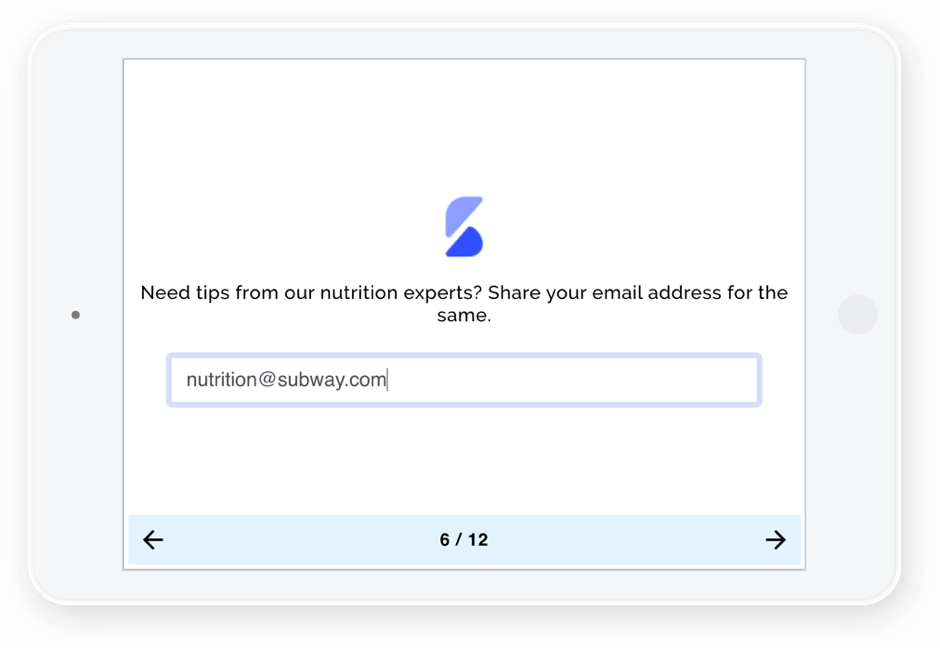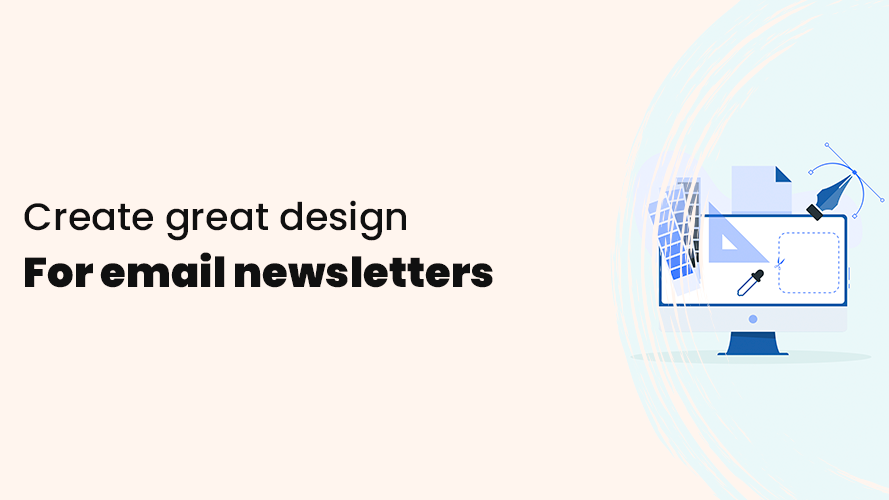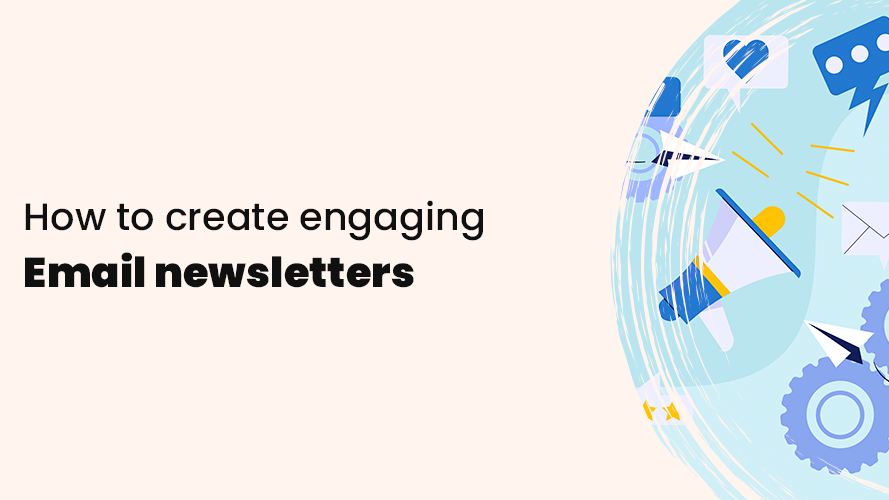How to build a
Email list and get more subscribers
Find out why you should build an email list and get practical tips for different channels to help you grow your list even bigger.
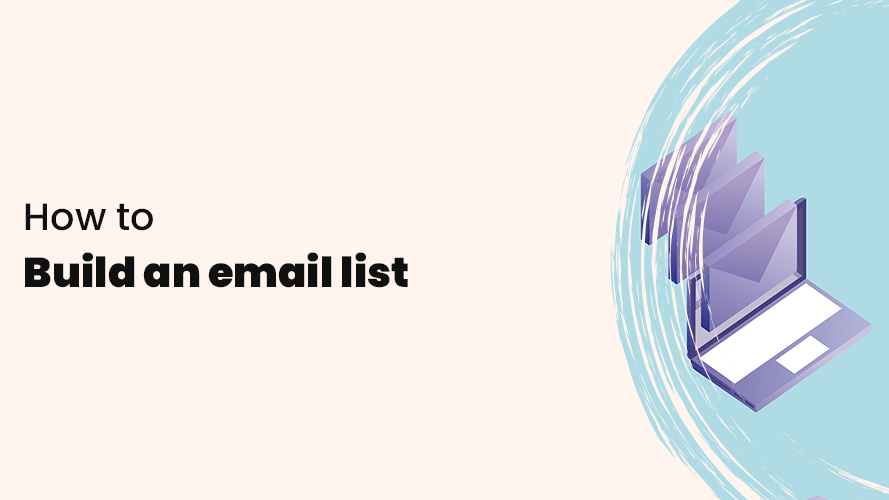
By getting more people to subscribe to your mailings, you have more control over when, where, and how they receive your marketing. That’s why it’s always a good idea to get your followers, contacts, or visitors to become subscribers.
You will never be able to influence algorithms, other companies’ business decisions, or how people use different channels, but what you can influence is how many people subscribe to your email list.
In this part of the guide, you’ll learn how you can use your different channels to get more subscribers.
Before you read up on the different channels and tactics available, we’ll go through what an email list is, why you should build one, and some things that are good to think about in general when it comes to getting more people to subscribe to your mailing list.
What is an email list?
An email list is a collection of email addresses that a company or individual has collected from their customers, potential customers, and website visitors, and that they have consented to receive your emails.
The fact that subscribers have given their consent to receive your emails means that they have voluntarily chosen to share their information with you because they are interested in keeping up to date with your business and what you offer.
With these collected email addresses, you as a business owner or individual can send targeted and personalized newsletters, promotions, or other emails for marketing purposes and start building long-term customer relationships, creating customer engagement, and increasing sales or conversions.
Why you should build an email list
Building an email list is more important than you think and the benefits are many. For most businesses, email is one of the most valuable and profitable channels they have, especially in e-commerce.
Here are a few benefits of building your email list:
- You own your email list and its contacts. You’re not dependent on other companies or platforms – no matter what happens with other channels, you still have full control over your email list.
- You have direct contact with your subscribers, allowing you to build long-term relationships and turn them into loyal customers over time.
- Email is personal and you can customize your content to each subscriber, as well as automate your emails based on customer behavior. You will find this difficult to do through advertising and social media, for example.
- You expose your messages and what you have to offer as many times as you want without any costs that advertising requires.
- Targeting is more accurate. With email, you can segment your audiences and target personalized content to your subscribers based on specific things like demographics or behaviors.
Before you start building your email list
Clarify how the email address will be used
Most people are afraid of receiving too many unwanted emails. They need to feel that they can trust you and that you will not resell their email address. That’s why it’s important that you tell them how you will manage their email addresses.
For example, you can tell them what kind of content they can expect and how often you will send them. The more clearly this is explained, the more likely they are to subscribe and remain a subscriber for a longer period.
Another option is to include a link to your privacy policy page that explains how the email address will be used or you can have a text below the form like below:
“Your email address will not be used for any purpose other than sending the email newsletter and will not be sold or shared. You can opt out of receiving further emails at any time.”
Make it easy to subscribe to your email list
Make sure that your signup forms are clearly visible on your website and that the registration flow is designed to be as simple as possible.
Long forms that require visitors to fill in a lot of information tend to scare them away as it is simply too time-consuming to go through the whole registration flow. Moreover, they will wonder what you are doing with all the information.
It is recommended that you use “double opt-in”, meaning subscribers get a confirmation email sent to them where they need to confirm their email address when they sign up for your signup form. If you use Get a Newsletter, this happens automatically.
Make it easy to unsubscribe from your email list
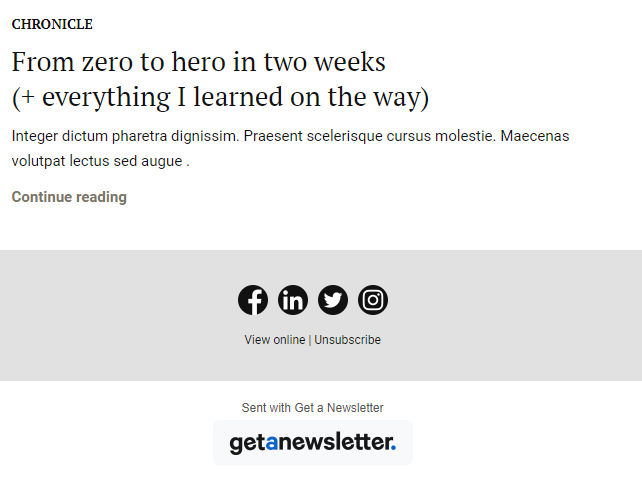
It is a smart idea to make it clear to your subscribers at the time of registration that they can unsubscribe from your email list at any time. This creates trust and security, meaning more people will dare to sign up.
In addition, it is required by GDPR to have an unsubscribe link in each email.
Maintain your email list regularly
Not all uninterested subscribers will always unsubscribe themselves from your email list. Some may stay there for a long time and ignore your mailings, which degrades your reputation, you get a higher bounce rate and risk your emails ending up in the spam more often.
A good email list is filled with subscribers who want to engage with your mailings and be in contact with you.
By maintaining your email list regularly, you will improve your deliverability and reach more active and engaged subscribers, which leads to better results for your email marketing.
Always think of quality over quantity when it comes to your mailing list.
Never buy an email list
It may be tempting to buy an email list with lots of contacts and think it’s a quick shortcut to getting new customers but it’s not that easy.
Firstly, it is illegal under the GDPR to send unsolicited emails and store data about people in your email marketing service without consent.
Secondly, recipients will be more likely to mark unsolicited emails from you as spam, which damages your reputation as an email sender and could ultimately lead to you being put on an email-blocking list.
Thirdly, if you send emails to recipients who have not made an active choice and subscribed to your email list, your mailing and its content will never be relevant to them. That is, they are unlikely to buy what you are trying to sell.
Building an email list can take time, especially if you are doing it from scratch and there are no shortcuts to a high-quality email list. Never buy a ready-made email list.
Tips on how to get subscribers via your website
Add signup forms
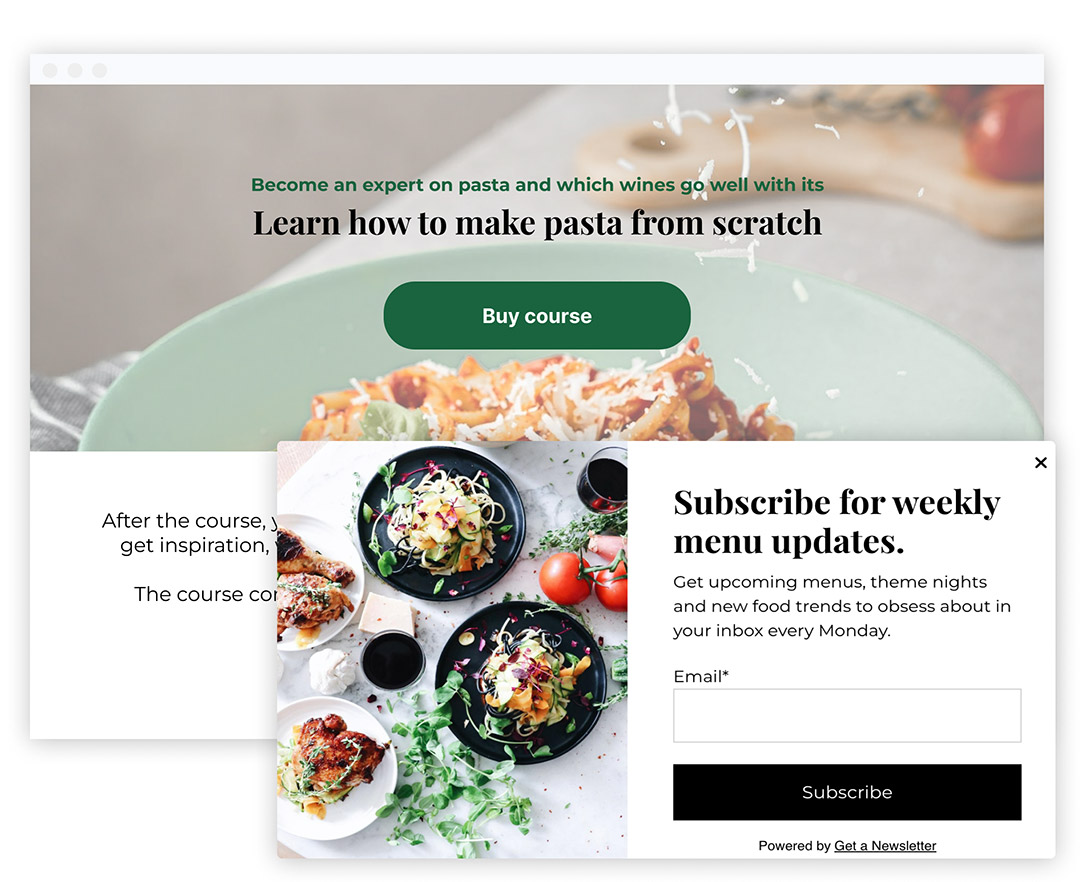
An easy way to get more people to subscribe to your email list is to add signup forms around your website, thus turning visitors into subscribers.
You have the option to add signup forms to every page around your website and the more forms you have, the more likely you are to get more people to sign up to your email list.
However, it’s important to make sure that your forms don’t interfere with your visitors’ experience of your website. They need to blend in and have a good balance with the rest of your content so that you still deliver good content and can more easily create relevance between your signup form and the page content.
For example, you can add a signup form on:
- Your home page
- In your blog articles
- In the footer
- Your ‘about us’ page
If you have a lot of pages and don’t know which pages have a lot of visitors, you can use Google Analytics to find out which pages are the most popular on your website.
Learn more about how you can create signup forms with Get a Newsletter.
In checkout
If you have an e-commerce business, you can give your customers the option to subscribe to your email list when they purchase from you. This gives you the perfect opportunity to inform your customers about future promotions, sales, and exclusive offers.
The easiest way is to create a button that customers can check when they buy from you. Don’t forget to tell them why they should subscribe to your email list and what value it brings them.
For example, you can write:
- “Want to learn more about X?”
- “Get exclusive offers and tips about X in your inbox.”
Customize your forms to each blog article and landing page

It is a good idea to make sure that the texts and call-to-actions in your signup forms relate to the content of the pages where you add forms. This will increase the chances of new visitors subscribing to your email list because they are reading your specific page for a reason and if they want to read more of the same topic, your signup form can be the way for them to get there.
For example, if you post about how small e-retailers can increase their sales with a smaller budget, your call-to-action in the signup form could be “Get 10 practical tips to increase sales”.
If you compare it to “Subscribe to our newsletter”, the first example is much more relevant to the topic visitors are already reading about. Whatever your site is about, it’s important to tell the reader that there is even more exclusive information available if they choose to subscribe to your email list.
Learn more about how you can create landing pages with Get a Newsletter.
Create an offer in exchange for email addresses
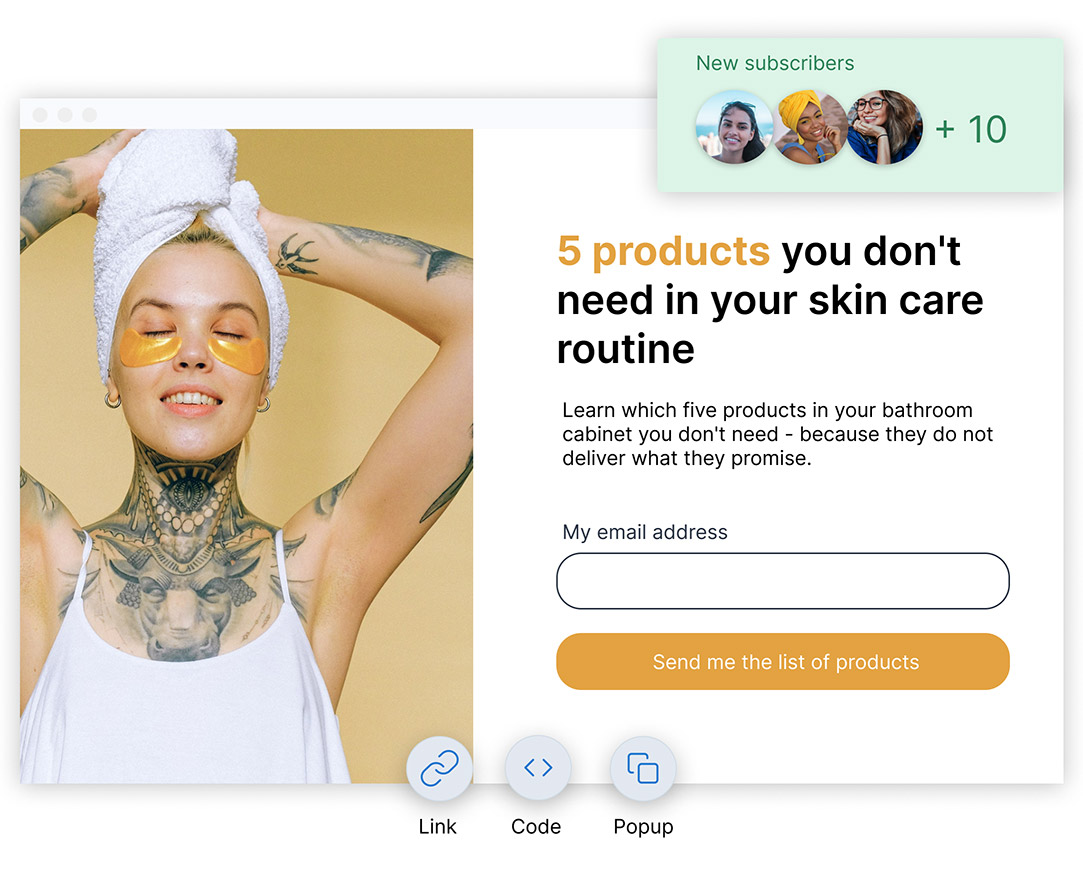
A professor named Dan Ariely did a study in which he offered 398 students free candy from Hershey or reduced-price candy from Lindt.
The result was that the majority of students chose free Hershey’s candy. However, Lindt candy is considered to have a higher value. Dan Ariely argues that people act not only as if free reduces the cost, but that it is also seen as a benefit.
The same principle applies to email lists. If you want visitors to subscribe to your mailing list, you may need to give something in return.
By offering a discount, free course, or free shipping, it becomes more enticing for a person to share their email address. This way, you can bring in more email addresses with which you can then build new relationships, which can lead to future sales.
Suggestions for offers you can create:
- Discount – A common offer in exchange for an email address is to offer a discount to new subscribers as a thank-you if they choose to subscribe. This will encourage new visitors to join your mailing list and make their first purchase with you.
- Free course or trial – Create a free course or trial of your product that only subscribers to your mailing list can access. It delivers high value to your visitors in return for sharing their email addresses with you.
- Exclusive sales and offers – You can create sales and offers that are exclusive to the subscribers on your mailing list. This will create a sense of exclusivity and will encourage visitors to subscribe to get access to what you offer.
- Free shipping – You can offer free shipping to your new subscribers or if customers purchase a certain amount. This can be enough of an incentive for them to join your mailing list to receive the free shipping offer.
- Offer a free download – For example, you can create a guide, checklist, tip list, PDF, or similar that is available as a free download to those who sign up for your mailing list.
Popup forms
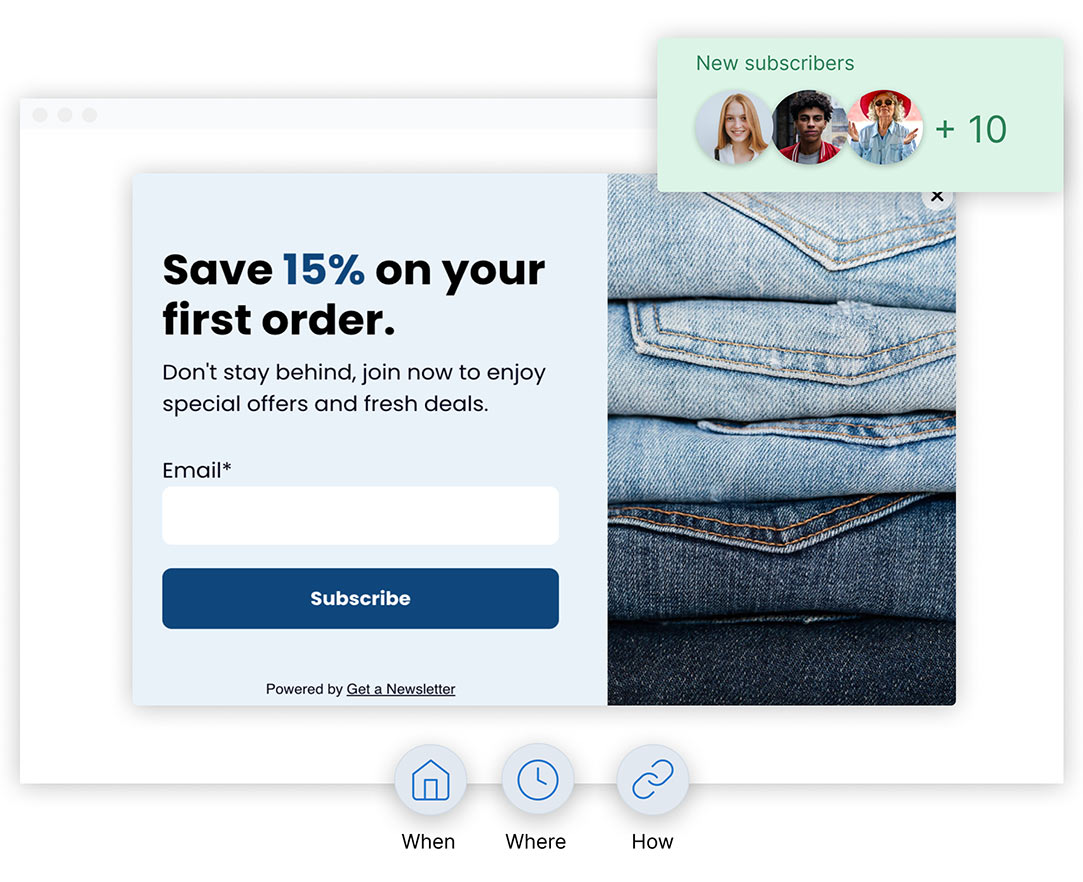
Similar to signup forms, you can use popups to collect email addresses. You can create a popup on your website to capture visitors’ interest and invite them to subscribe to your email list.
With popup forms, you need to briefly tell visitors what they will get for subscribing to your email list and it is common to include offers here too – for example, a discount code.
Popups tend to become an annoyance and therefore they need to be used in the right way to have a good effect and result. For example, it might not be a good idea to show your popups to people who are visiting your website for the first time or to people who are already subscribed to your email list.
Instead, it might be a good idea for your popups to be shown to people who are returning visitors who stay on your website for a certain amount of time and who are not subscribed to your mailing list, or to people who have already bought from you but are not subscribed to your newsletter.
You should test different settings for what works well for you with popups. The key is that they should appear to the right people at the right time and not show up too quickly or too often.
Learn more about how you can create popup forms with Get a Newsletter.
Tips on how to get subscribers via social media
Invite to subscribe to your email list
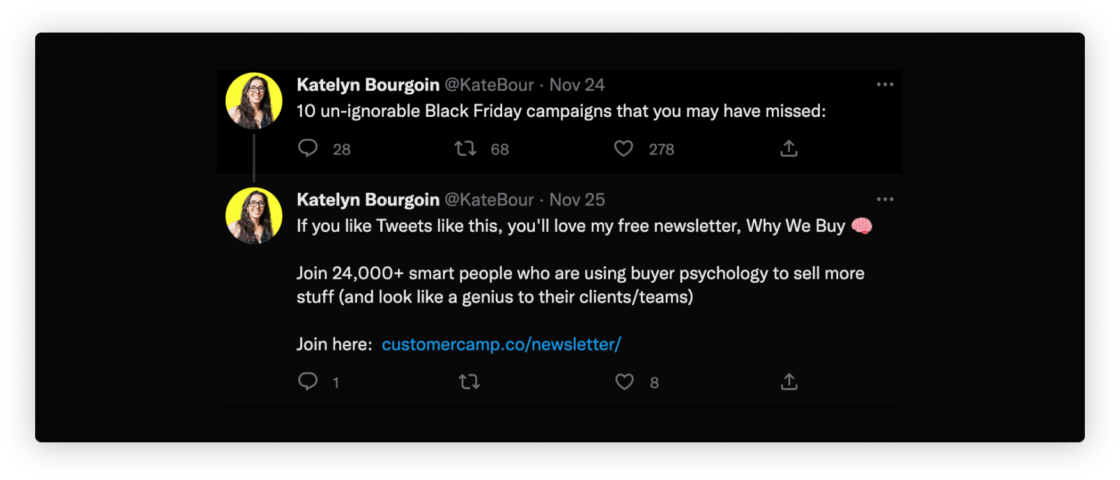
You can mention your email list on social media before, during, and after sending. The posts should focus on what the person will get out of subscribing to your email list and what the email blasts themselves contain.
For example, you can always have it as a comment or at the end of your post add a text where you write something like “Did you like this post? Enter your email address and receive similar tips and advice this week/month directly in your inbox”
Share your email newsletter on social media
After you have sent an email, such as a newsletter or a campaign, it is always good to share it on social media. This way, people can read and then choose to subscribe to it.
Pin a post to your feed with a link to your form
Publish a post mentioning your emails and then pin it to the top of your feed. This way, anyone who visits your Facebook, LinkedIn, or other platform will see that you’re sending out emails and they can easily sign up to your email list to receive your mailings.
Keep in mind that here, too, the post should focus on what your emails contain and what the person will get out of it.
Promote a post
If you have few social media followers or simply want to reach more people, you can always create an advertising campaign and promote a post.
The most effective thing you can do is to create a customized post that has the sole purpose of collecting email addresses and nothing else. It is important when promoting a post that you offer something of high value in exchange for email addresses.
For example, you could offer a guide with in-depth content that is hard to get elsewhere, an e-book, or a free consultation. Asking for email addresses in exchange for nothing will not work in advertising. The people who will see your ads don’t know you, don’t know who you are and what you have to offer – why should they give you their email address?
You can also promote posts that are already published to reach more people. Here, it might be a good idea to review the engagement your previous posts have generated and, based on that, choose a post that has received a lot of engagement. It is still just as important that the post delivers high value otherwise you risk spending money unnecessarily on advertising.
Tips on how to get subscribers via email
Encourage sharing of your emails
Word of mouth is one of the most effective marketing strategies you can use. Therefore, make it easy for your subscribers to share your emails. You can also encourage your readers to share the newsletter if they wish. This way, more people can find out about your emails and start subscribing too.
Add a link to the email signature
Depending on the size of your business, you probably send hundreds or thousands of emails to potential and existing customers every month.
These emails give you a perfect place to promote your newsletter or similar. Therefore, make sure to add a link in your company’s email signatures that makes it easy for recipients to start subscribing to your email list.
It also makes it easy for those who are not subscribed but read your mailings to become subscribers.
Tips on how to get subscribers via other channels
Competitions & giveaways
Competitions and giveaways are usually a great way to get your brand out there quickly and grow your mailing list. This can be very effective to implement on your social media but works just as well to showcase on your website or through advertising.
It’s as simple as holding a competition or giveaway that anyone can enter by signing up with their email address.
Make sure the reward you plan to give away is targeted to your audience. For example, if your business sells snowboarding and skiing equipment, you should give away something relevant to snowboarding and skiing. In other words, in this example, you don’t want to give away fishing equipment or hygiene items.
This way, participants in your competition or giveaway are more likely to remember your brand in the future and might buy from you next time instead of another brand.
Surveys
If you use surveys in your business, you can create a step at the end of your survey, where you invite the recipients to subscribe to your email list.
For example, you can ask them to share their email address with you so that you can send them the results of the survey at a later stage, or you can offer them a discount on their next purchase via email once they subscribe to your mailing list as a thank you for responding to the survey.
Collaborate with other businesses
By partnering with other businesses in your industry, you can benefit from their existing audience and reach new potential customers who may be interested in your products or services.
You can create valuable content and campaigns that appeal to your shared audience to capitalize on each other’s reach and grow your email lists together, a win-win situation.
Partnering with companies in your industry also helps build brand awareness and authority in your field.
Other tips for better results
Test your signup flow
Take the time to test your signup flow and think about how you would experience it if you signed up to your mailing list for the first time. Can you simplify the flow and remove some steps? Does the confirmation email feel good and work? Do all buttons and links work properly throughout the signup flow?
Small and simple mistakes like a wrong link or similar can be very costly but can easily be avoided by testing your signup flow.
Make use of social proof
People do what others do. Leveraging social proof is about showcasing what those who already read and love your emails have to say. Those who are deciding whether or not to sign up want to know if what you claim about your emails is really true.
How can you collect reviews and testimonials that you can put on your website?
Do not write “Subscribe to our newsletter”
“Subscribe to our newsletter” says nothing about what the newsletter contains. Everyone wants to know what they get out of subscribing. So it’s time to change that sentence to something that creates more interest and gets more people to sign up.
Here are some examples of what you can write:
- X gets discounts and inspiration every month, do you want to be like X?
- Lisa bought a lamp, ‘blissfully’ unaware that she could have received a 25% discount (using the discount code in the last newsletter). Don’t be like Lisa – don’t miss out on any discount. Sign up for the newsletter, which is full of discounts.
- Do you want to get better at X? Enter your email address and receive tips and advice on X.
The most important thing is to find out what they get by sharing their email address. Also, remember to promise what you can deliver. There is no point in writing something untrue to get more people to sign up. It can lead to the person having different expectations of your newsletter.
Get started building your mailing list
Make a plan and write down which of the above tips you want to test and whatever tips you use, always remember to focus on what the reader gets out of subscribing to your email list. If you do that, you will be better than most at email marketing.
Don’t focus on the number of subscribers either. Think quality over quantity. It’s about sending to the right subscribers, not the quantity of subscribers.
When you focus on quality, you will see results more easily. You can send a campaign to 1000 contacts, who are not ready to buy from you or send to 100 contacts, where more than half are ready to buy from you.
You can choose to continue reading the next part on how to best design your emails to get better results or get started right away with Get a Newsletter’s free plan and start building your email list.
Get started with email marketing
Start creating & sending email newsletters for free with Get a Newsletter to easily reach your subscribers and customers.
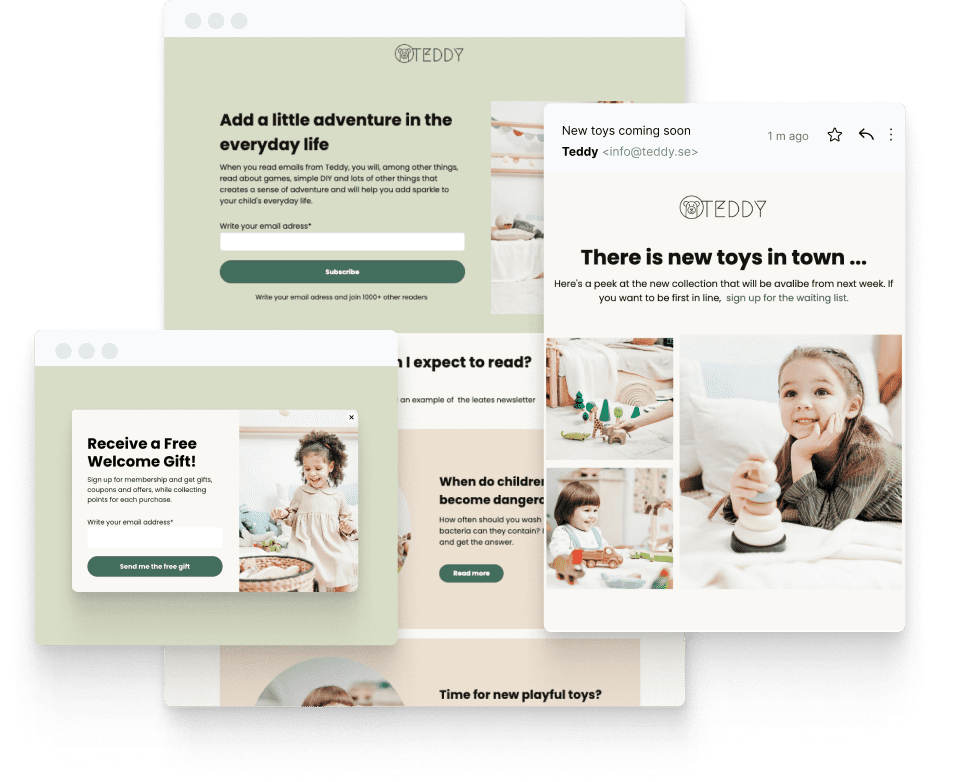
Keep reading
20 minutes
11 minutes
10 minutes
Get started for free
Explore newsletters, landing pages, and surveys. Market your
products and services. Increase your sales and customer loyalty.
